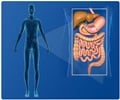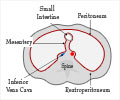
"By documenting inequities in analgesia and length of stay for abdominal pain in a nationally representative sample of emergency department visits, this study contributes to the growing body of evidence showing disparities in pediatric health care," said Tiffani Johnson, M.D., primary investigator and emergency department physician at The Children's Hospital of Philadelphia. "Recognizing the existence of racial and ethnic disparities is a critical first step needed to eliminate inequities in care," added Dr. Johnson.
The researchers analyzed data from the 2006-2009 National Hospital Ambulatory Medical Care Survey of 2,298 visits by patients aged 21 and younger who presented to emergency departments across the nation with abdominal pain. Pain score, receipt of any analgesics, receipt of analgesics for severe pain and narcotic analgesics were the primary outcomes. Diagnostic tests, length of stay, 72-hour return visit and admission were secondary outcomes.
The patient population was 70.1 percent female; 52.6 percent of the patients were white, 23.5 percent were black, 20.6 percent were Hispanic and 3.3 percent were from other racial/ethnic groups. The mean patient age was 14.5 years old.
"Additional research is still needed to help understand the sources of these disparities, which may include factors at the level of the patient, parent, physician, or healthcare system. This research can inform the development of interventions that seek to eliminate race- and ethnicity-based differences in the management of abdominal pain and other common pediatric complains in the emergency setting," Dr. Johnson said.
Source-Eurekalert















